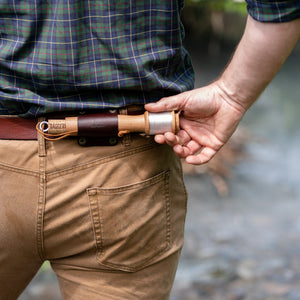Food Storage for Backpacking
Backpacking is a memorable and exciting experience, but it requires a lot of preparation. Between added weight, shelf life, and food storage, there are a lot of things to consider when meal planning for your trip. Whether you’re a beginner or an experienced trekker, it’s always a good idea to review your food needs to make sure you have the safest trip possible. Here’s everything you need to know about storing your backpacking food.
How Much Food Should You Carry?
Based on weight, the average hiker should carry between 1.5-2.5 pounds of food for a backpacking trip. However, this is a very general number. The amount of food you bring will depend on your experience, length of travel, and weather conditions. If you can try to invest in food that’s lightweight and easy to carry, that’s the most ideal solution.
Another way to approach food preparation is measuring your items by calories. In fact, if you must choose between the two, pay attention to calories first. Proper nutrition is vital to a safe backpacking experience, meaning you need to ingest calories dense food to stay energized on the trail. Try to aim for an average of 3,300 – 3,800 calories per day of backpacking.
How Fast Does Food Go Bad on a Backpacking Trip?
Simply put, it depends on the food and your hiking climate. Colder climates may allow for more flexibility with perishable foods, but this won’t be the case for hotter temperatures. Meanwhile, freeze dried foods, particularly packages designed for backpacking, can have a shelf-life of up to 30 years.
Dehydrated foods also tend to be a popular choice for backpackers for their prolonged longevity. Unopened, dehydrated foods can last up to five years in ample climates. Packs of dehydrated and freeze-dried foods can be purchased at grocery or outdoor outlet stores. Otherwise, you can dehydrate or free-dry your own foods. These popular, perishable backpacking foods can last for the following estimated days in temperate, alpine climates:
Should You Try to Keep Food Cold on a Backpacking Trip?
Try to avoid packing perishable foods unless it’s absolutely necessary, especially if you’re backpacking through an area with high temperatures and humidity. With that being said, if you’re hiking through cold or temperate climates, it is possible to refrigerate certain foods without adding more weight.
The key to keeping your perishable foods cold on a backpacking trip is the type of cooler you use, the types of frozen packs you use, and how tightly you pack in your foods. Make sure you freeze all of your planned perishable foods before you leave and find out if it’s worth the added weight. When on the trail, eat your perishable foods first before moving on to your non-perishables.
Backpacking Food
When packing your food, try to keep in mind that some of the weight you put in will decrease over the course of your trip. This doesn’t mean you should add heavier meals, but you shouldn’t risk malnourishing yourself for the sake of weight. As an alternative, eat your heavier meals towards the beginning of your trip so you’re not carrying as much weight later on.
As a general rule of thumb, focus on gaining back your calories over packing extra meals by means of nutrient-dense snacks. This will help you reduce weight while keeping your energy levels up. Consider separating your packaging by meal to stay organized and remember that your meals don’t have to be fancy. In other words, focus on efficiency and convenience over time and energy consuming meals!
Food Storage Containers
It’s important to remember that you won’t be alone in the wilderness. “Leave no Trace” isn’t just a catchy phrase, it could potentially save you, your hiking party, and the surrounding ecosystem. Always make it a priority to pack up what you bring into the camp, especially when it comes to food. Failing to adhere to backcountry food storage could result in dangerous encounters with aggressive wildlife, expensive penalty fees, and food loss/contamination.
Bears have become increasingly dangerous due to messy hikers who leave behind food. This results in tragically fatal encounters with hikers, leading to the euthanization of important wildlife. If you’re backpacking in an area prone to bears, use a bear canister to store your food. These are convenient, translucent, and impossible for bears to open. The downside is that they tend to add a lot of weight, making it difficult to include with your belongings.
Food Storage Bags
As an alternative to heavy, bulky bear canisters, food storage bags are lightweight and made of strong materials that keep your food safe. These are often water repellant and designed to be hung from trees to prevent bear curiosity and rodent contamination.
At Daggerfish, we offer beautiful, water repellent field pouches ranging in color and size. As an added convenience, our field pouches include double-sealed seams that allow you to roll up food. Our high-quality field pouches are amazing for packing and enduring harsh weather conditions experienced on backpacking trips.


















